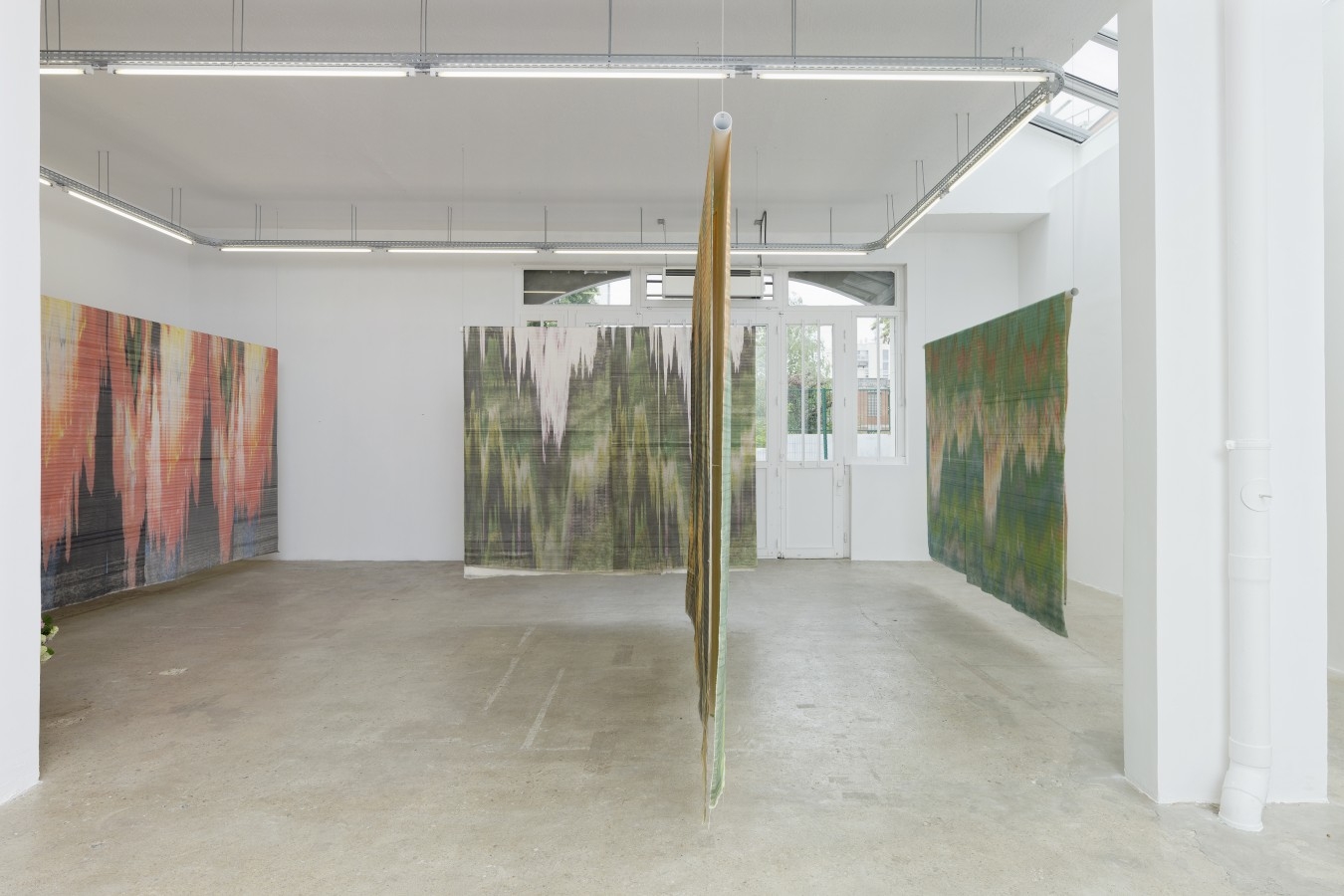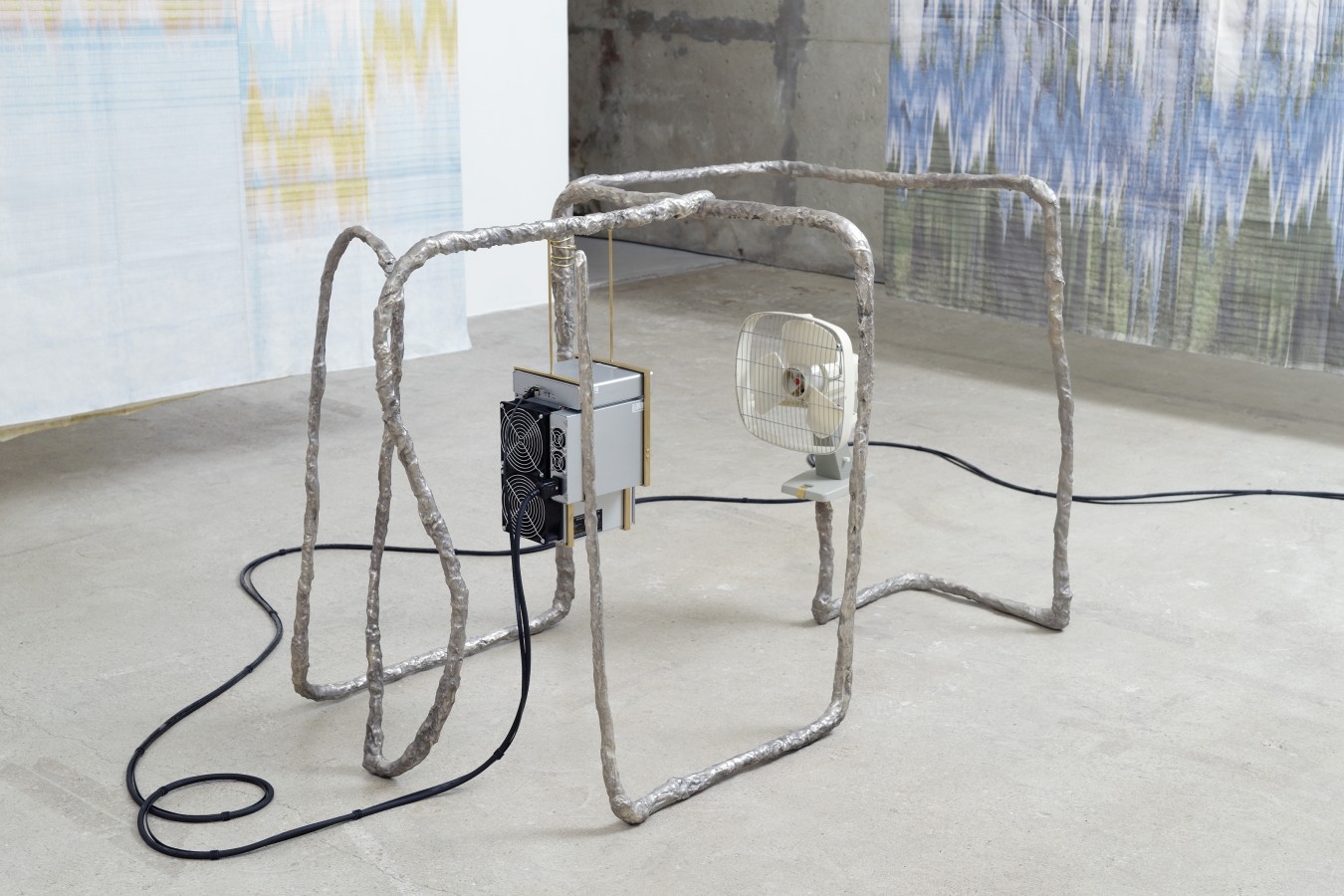En 1801, Joseph Marie Jacquard imagine un métier à tisser automatique considéré comme l’ancêtre de l’ordinateur. Un système de cartes perforées permet de programmer le métier Jacquard, remplaçant le travail de plusieurs tisserands par un seul ouvrier. Les travailleurs y virent une menace, une concurrence directe de la machine sur l’homme, ce qui causa quelques années plus tard le premier soulèvement des canuts en France et des Luddites en Angleterre.
Aujourd’hui, il existe des machines qui travaillent et génèrent de l’argent de manière autonome : les workers. Connectées à internet, ces machines valident des transactions sur le réseau Bitcoin, la plus populaire des cryptomonnaies. Ce travail est récompensé par une fraction de la transaction traitée. Le Bitcoin est régulé par ses utilisateurs et ne dépend d’aucun gouvernement ni d’aucune banque centrale à la différence des monnaies traditionnelles.
Xavier Antin transforme ces nouvelles ouvrières inépuisables et désintéressées en des sculptures-machines dont les revenus sont systématiquement dépensés. Worker (flowers), placée au centre de cette exposition, se met en marche périodiquement pour financer la livraison de bouquets de fleurs. Ils fanent, sèchent et s’accumulent progressivement pour dessiner une vanité au fil de l’exposition.
De grandes tapisseries colorées sont suspendues dans l’espace pour former un jardin habité par cette sculpture et son rituel étrange. Ils sont imprimés par l’artiste sur des imprimantes jet d’encre grand format transformées à dessein, dont le mouvement est également l’héritage du métier à tisser. Les motifs imprimés proviennent de prises de vues vidéo de fleurs, projetées sur des scanners à plat, créant ainsi une chaîne d’impression artisanale associant technologie numérique et gestes manuels.
Déjà présenté à la fondation Hermès de Singapour en décembre dernier, ce nouvel ensemble de tissus imprimés a été produit à partir de films réalisés dans les parcs et jardins de la cité-état, connue autant pour ses banques que son climat tropical.
Vanishing workflows (des fleurs de Singapour), adaptation Parisienne du projet, est accompagnée d’un livre d’artiste réalisé entre les deux expositions.
— Œuvres produites dans le cadre de l’exposition à Aloft at Hermès grâce au soutien de la Fondation d’entreprise Hermès —
 Loading
Loading  Loading
Loading Vanishing Workflows (des fleurs de Singapour), 2019, Crèvecoeur, Paris © Aurélien Mole
 Loading
Loading Vanishing Workflows (des fleurs de Singapour), 2019, Crèvecœur, Paris © Aurélien Mole
 Loading
Loading Vanishing Workflows (des fleurs de Singapour), 2019, Crèvecœur, Paris © Aurélien Mole
 Loading
Loading Vanishing Workflows (des fleurs de Singapour), 2019, Crèvecoeur, Paris © Aurélien Mole
 Loading
Loading Vanishing Workflows (des fleurs de Singapour), 2019, Crèvecœur, Paris © Aurélien Mole
 Loading
Loading Vanishing Workflows (des fleurs de Singapour), 2019, Crèvecœur, Paris © Aurélien Mole
 Loading
Loading Vanishing Workflows (des fleurs de Singapour), 2019, Crèvecœur, Paris © Aurélien Mole
 Loading
Loading Vanishing Workflows (des fleurs de Singapour), 2019, Crèvecœur, Paris © Aurélien Mole
 Loading
Loading Vanishing Workflows (des fleurs de Singapour), 2019, Crèvecœur, Paris © Aurélien Mole
 Loading
Loading flowers (Singapore) #3, 2018, UltraChrome pigment print on cotton twill, 390 × 320 cm (folded: 180 × 320 cm)
 Loading
Loading flowers (Singapore) #2, 2018, UltraChrome pigment print on cotton twill, 390 × 295 cm (folded: 180 × 295 cm) © Aurélien Mole
 Loading
Loading worker (flowers), 2019, copper, silver, nickel, palladium, computer, cables, fan, 160 × 85 × 97 cm © Aurélien Mole
 Loading
Loading worker (flowers), 2019 (detail) © Aurélien Mole
 Loading
Loading flowers (Singapore) #4, 2018, UltraChrome pigment print on cotton twill, 390 × 245 cm (folded: 180 × 245 cm)
 Loading
Loading flowers (Singapore) #5, 2018, UltraChrome pigment print on cotton twill, 390 × 320cm (folded: 180 × 320 cm)
 Loading
Loading Vanishing Workflows (des fleurs de Singapour), 2019, Crèvecœur, Paris © Aurélien Mole
 Loading
Loading Vanishing Workflows, 2019, Publication, edition of 200, Published by Temporary Press